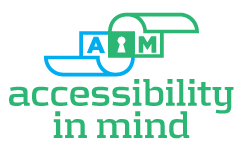In January 2017, the U.S. Access Board issued the Information and Communication Technology (ICT) Standards and Guidelines, updating its existing Electronic and Information Technology Accessibility Standards under Section 508 of the Rehabilitation Act of 1973, (“508 Standards”), and the Telecommunications Act Accessibility Guidelines under Section 255 of the Communications Act of 1934 (“255 Guidelines”). These Standards are now in effect as of January 18, 2018.
 How does this affect the requirements for PDF compliance with Section 508?
How does this affect the requirements for PDF compliance with Section 508?
The new rules are a lot to digest, as the encompass accessibility regulations for a huge range of electronic information technology. Most of it does not pertain to our services at Accessibility In Mind (AIM). Let’s see what the final regulatory analysis said about PDFs:
The requirements for one specific type of electronic documents—those stored in PDF—are established by referencing the applicable ISO standard. PDF/UA-1 provides a technical, interoperable standard for the authoring, remediation, and validation of PDF content.
Makes sense, but after comments were received, we got the final ruling, PDF/UA is no longer referenced:
The intent of the proposed IBR of PDF/UA–1 in the NPRM was to make conformance assessment of PDF documents easier, assuming that, in the future, PDF/UA–1 would become widely adopted. WCAG 2.0 strongly informed the development of PDF/UA–1. With the exception of the contrast requirement, PDF/UA–1 includes most accessibility requirements relevant to the PDF format, including textual equivalence for static graphical elements. However, PDF/UA–1 does not address scripting or the use of PDF files as a container for video. Therefore, the end user would still have to reference WCAG 2.0 for some requirements to ensure that a PDF file is fully accessible. Because WCAG 2.0 can be used as a sole standard for PDF compliance, and PDF/UA–1 cannot, the Board finds WCAG 2.0 to be appropriate as the sole standard for PDF files. Therefore, in the final rule, we have removed the reference to PDF/UA–1 from E205.4, C203.1, and 602.3.
WCAG 2.0 It Is
Wouldn’t it be great if PDFs used the same structure and protocols as web content, like HTML and all of it’s children? Sorry, not where we are. PDFs have their own specific way of doing and describing content, Adobe made sure of that.
Here’s WCAG 2.0; see if you can find much specific to PDF tags. Nothing there. In many ways, it is a broadening of the regulation, rather than a guide to how you create any specific content. For example, Principle 4, “Robust”
Content must be robust enough that it can be interpreted reliably by a wide variety of user agents, including assistive technologies.
Below that you will find the guidelines, which say that whatever “markup language” you use, make sure your “tags” are correctly formatted:
Start and end tags that are missing a critical character in their formation, such as a closing angle bracket or a mismatched attribute value quotation mark are not complete.
That is a no-brainer, but if you want help making sure your PDFs are accessible, you need to work to a guide that’s in the “language” of your content. It is logical: the Access Board couldn't write specs for each and every conceivable markup language, it had to be general.
Accessibility in Mind is covering all bases: We're dedicated to providing remediated documents that are as accessible and compliant as is technologically possible; to that end we will guarantee our documents are compliant with WGAG 2.0, and that they conform with PDF/UA’s much more relevant criteria.
PDF/UA-1 provides a technical, interoperable standard for the authoring, remediation, and validation of PDF content to ensure accessibility for people with disabilities who use AT such as screen readers, screen magnifiers, and joysticks to navigate and read electronic content.
The International Standard for Accessible PDF Technology (PDF/UA-1) provides a roadmap for remediating, testing, and ensuring accessible PDFs that are “universally accessible”.
Accessibility is our goal here at AIM, and we are “refreshed” and ready! All documents remediated by Accessibility In Mind are compliant with WCAG and PDF/UA-1

